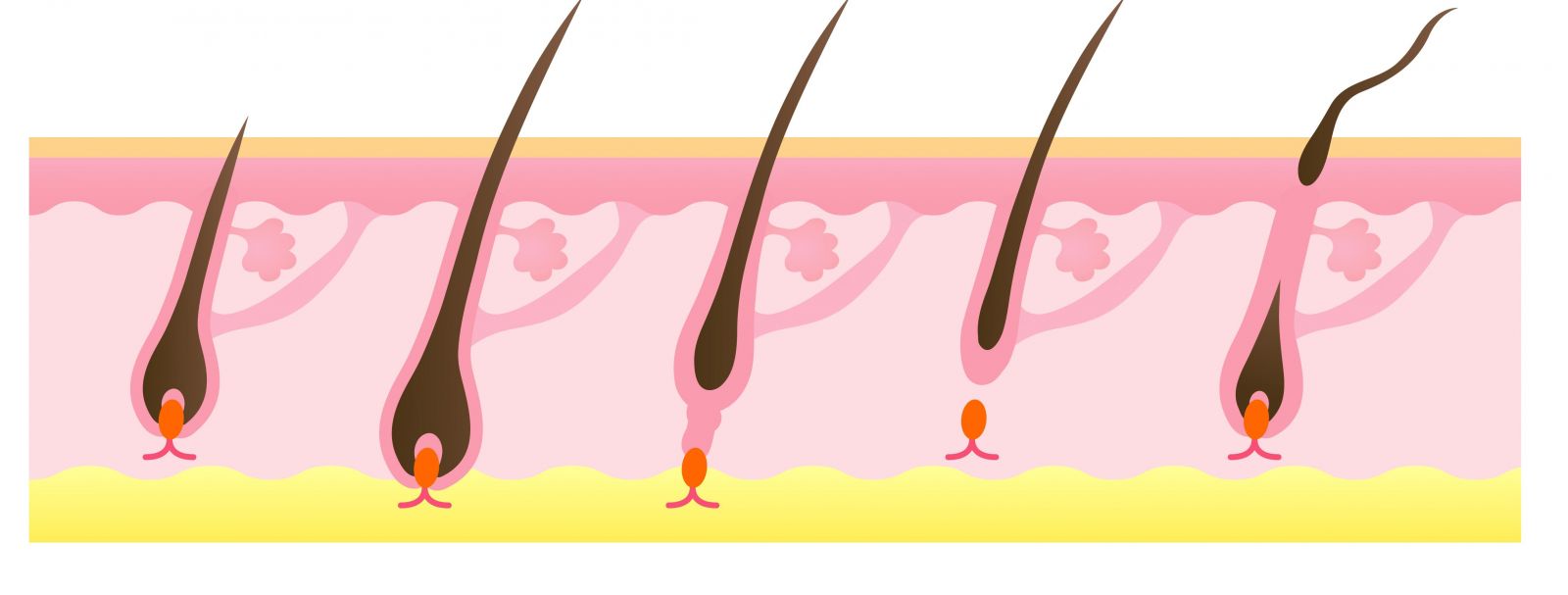Generally, an adult human has 100 thousand to 150 thousand strands of hair. In exceptional cases, this number can go up to 300 thousand to 350 thousand wires. An average of 40 to 100 hair loss per day is normal for a person. Sometimes these spills can reach up to 150 strands.
Hair is located in a very small pocket called the hair molecule within its own skin and is attached to the skin at its root. There is a hair follicle under the molecule. Papilla (ball) at the root of the hair is the formation and development organ and the living part of the hair. There are capillaries under the papillae area in our body. These capillaries pump blood to this area, and the hair, which contains the necessary nutrients and oxygen in the blood, grows at this rate. In other words, our hair is fed with blood.
Hair growth: As the young cells formed during the growth of our hair divide in the Papila region, the old cells push forward. In this way, these cells, which are pushed forward, lose blood circulation, their structure and nucleus deteriorate, and they die, and these dead cells harden and become keratinized. The gaps between the hairs are filled by secreting a sticky substance. And thus, they stick tightly to each other and form the hair strand. Our hair grows from the bottom of the root in the hair follicle. In other words, the hair strand is formed by the stacking (sticking) of dead cells on top of each other and thus consists of a protein called keratin, which is important for our hair.
Hair growth stages
The chemical elements called carbon, hydrogen, oxygen, nitrogen and sulfur that are necessary for our hair create the chemical compound called keratin, and our hair was formed thanks to these elements.
Our hair goes through certain stages. These stages are divided into 3;
1) Development Phase (Anagen)
This phase lasts 3 years. In other words, the hair strand maintains its development, vitality and shine for 3 years and grows for 3 years.
2) Regression Phase (Catagen):
This phase lasts 3 weeks. After the development phase, the hair strand enters the regression phase. At this stage, the hair loses its vitality, shine and appearance. So the hair stops growing. It becomes a rod and rises (is pushed) within the molecule at the end of this stage. The rod-shaped hair is removed by a new one growing at the base of the hair. Sometimes new hair can grow without the old hair falling out.
3)Rest Phase (Telogen):
This phase lasts 3 months. After the regression phase, the follicle from which the hair falls enters the resting phase, and at the end of this phase, it creates a new hair strand by cell division. This continues throughout our lives. The average hair formation time is 85-90% development, 1-2% regression, and 8-10% rest phase. According to these findings, the lifespan of a strand of hair is 3.5-4 years. However, if the person has healthy hair due to genetic factors and has a balanced diet since childhood, this can last up to 7 years.

